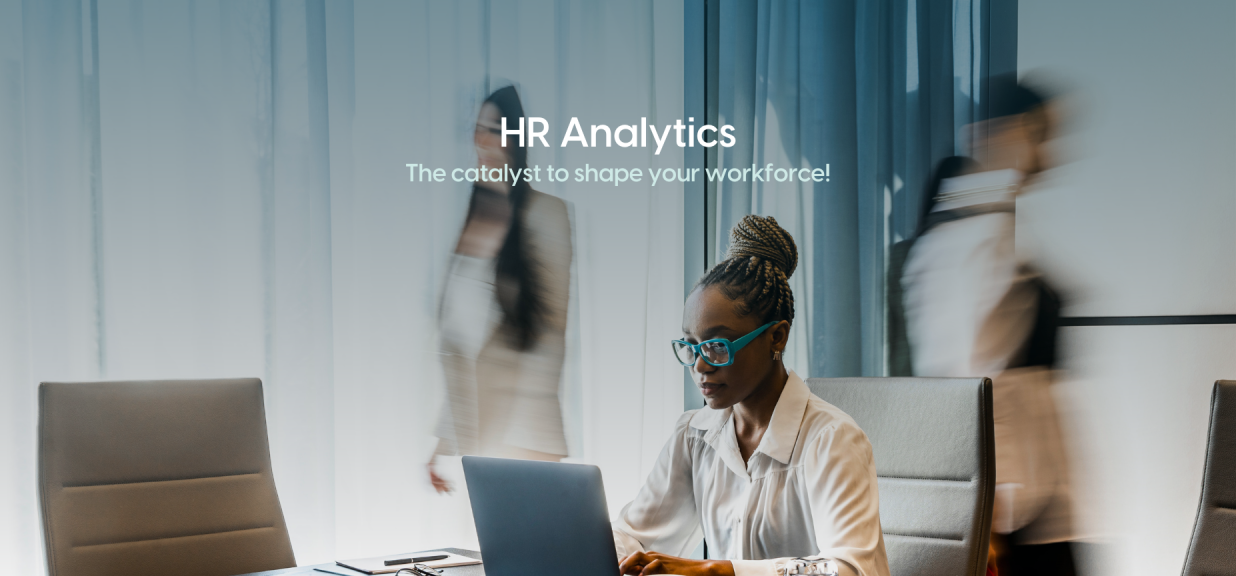HR analytics: 10 ways it transforms your company

Imagine you have the power to shape your organization's most important and essential asset: your human resources. How would you use this power to hire the best talent, promote the most deserving employees, and create a positive and engaging work environment? This is not a hypothetical scenario but a reality for every HR manager.
Every organization faces work challenges that can be solved and improved by focusing on human resources, the vital role players in any organization. HR managers use a powerful tool called "HR Analytics" or "People Analytics" to analyze people and their work-related challenges and prevent them from becoming disengaged.
By adhering to the strategies formulated, every organization's major and primary objective, i.e., profit maximization, can be achieved.
People analytics is analyzing the talent data related to the organization, which includes examining the past employee behavior, experiences, and basis on which the future and current performance of the employees can be predicted and improved. HR analytics is a subset of people analytics that focuses on the human resource function and its impact on the organization.
ALSO READ | The metaverse of madness: Its role in the future of work
HR analytics can offer many benefits for your company in the future. Here are ten ways in which it can enhance the performance of your company:
1. Improves employee experience at the workplace: HR analytics can enable corrective measures by identifying the challenges and potential areas for improvement. The data assists in enhancing the employees' workplace experiences and adding to the betterment throughout the employee life cycle.
2. Improves hiring and onboarding process: The data guides recruiters about the previous hires' performance and helps them to select the right people for the right job at the right time. The hiring process is improved as the recruiters match the expectations and required skill set to accomplish the goal. Unlocking human potential fosters effective leadership within organizations, empowering them to cultivate exceptional leaders.
A stronger onboarding procedure that guarantees compliance and encourages secrecy by protecting employee data is also highly recommended. Neeyamo Onboarding provides candidates with a more efficient and user-friendly experience throughout onboarding.
DOWNLOAD | Global Work: Top 10 Predictions for 2023 and Beyond
3. Builds a blueprint for performance management: The data helps HR leaders to plan requirements and improvements by building a blueprint that identifies performance expectations and introduces a process to eliminate unfair and unwanted practices. It also provides a detailed understanding of work productivity and core areas for potential development. If needed, this insight also supports HR managers in organizing employee development events and training sessions. It can guide decisions to invest in skills development courses to ensure every team member has access to the right resources for growth and success.
4. Retaining of the resources: The current state of employee retention and turnover is revealed by some exciting insights from the Work Institute 2022 Retention Report:
- More than 68% of employees who quit could have been retained
- More than 47 million employees quit voluntarily in 2021
- Voluntary turnover costs exceeded $700 billion in the year 2021
The paramount objective for every organization is to retain talented and skilled employees. Losing the right people at work can adversely impact business outcomes and goodwill. Data analytics-Employee retention strategy is the key to understanding the employee requirements for increased employee satisfaction. Lower attrition rates foster a culture of employee loyalty and engagement, which benefits business performance.
5. Results in an efficient staff engagement: HR managers can deep dive into the current situations, and the shortcomings can be called out to ensure the best possible outcomes –productivity-efficiency at work-efficient staff functioning, etc. Staff management can create wonders resulting in a better workplace environment for employees to stay motivated.
For instance, by comparing the productivity of the employees working remotely and those working from the office, we can measure the employees' engagement at work. According to the statistical analysis, many companies have gained confidence in their employee's home-office performances as the employees reported that home-office environments were better financially.
Also, most employees worldwide were expected to work two to three days per week from home, while 8% of surveyed employees aimed for a full-time remote work schedule.
6. Improves the training process: Structured training plans can meet the work requirements and enhance employee performance. Training is vital for all levels of the organization, and effective training leads to better performance at work.
In addition, data analytics also assists the management in determining the areas that need improvement and can be used to schedule training sessions that boost staff productivity.
7. Better HR functionality: Leveraging the data enhances HR functioning by streamlining the hiring process and personnel management, which consequently fosters employee satisfaction, employee retention, and a positive working environment. Attaining the aforementioned goals supports the organization's success and facilitates long-term goal achievement.
ALSO READ | HR Tech Enabling Seamless Transition to Future of Work
8. Compensation and benefits packages: Providing better remuneration and benefits with the aid of tools helping with benefit plans and packages to provide global employees is now possible with Neeyamo Benefits, which helps achieve one of the main goals, i.e., employee satisfaction and enhanced employee engagement at work. Data analytics reports can inform policy revisions and enhancements that improve the incentive structure. Employees will feel valued and recognized for their work and develop a sense of trust and belonging with the organization.
9. Enhances strategic management of human resources: The analysis will support the manager in developing effective strategies for human resource management that will effectively enhance employee work life. A data-driven approach can address the various facets of an employee's work life and create a goal-oriented organization.
Implementing strategic decisions is made feasible with the aid of tools like Neeyamo Reports, which compiles and provides a sizable amount of data that serves as the foundation for analytics into a simpler form that can be utilized to make operational and strategic level decisions with ease.
10. Promotes coordination at work: Communicating with the team about the collective goals and obstacles faced during work promotes deep understanding among the team and brings coordination which helps to achieve ultimate goals.
As Doug Conant said, "To win in the marketplace, you must first win the workplace." HR analytics is vital in data-driven planning, consistent goal attainment, and shortcoming mitigation in various aspects of the employee life cycle.
Neeyamo can help you do that with its cloud-based technology that provides solutions for every stage of an employee lifecycle: From onboarding to offboarding, Neeyamo's tech stack handles employee data with remarkable speed and efficiency. If you want to discover how you can leverage this technology for your organization, contact us at irene.jones@neeyamo.com
Latest Resources
Stay informed with latest updates
If you're curious and have a thirst for knowledge pertaining to the HR, payroll, and EOR universe, don't miss out on subscribing to our resources.















